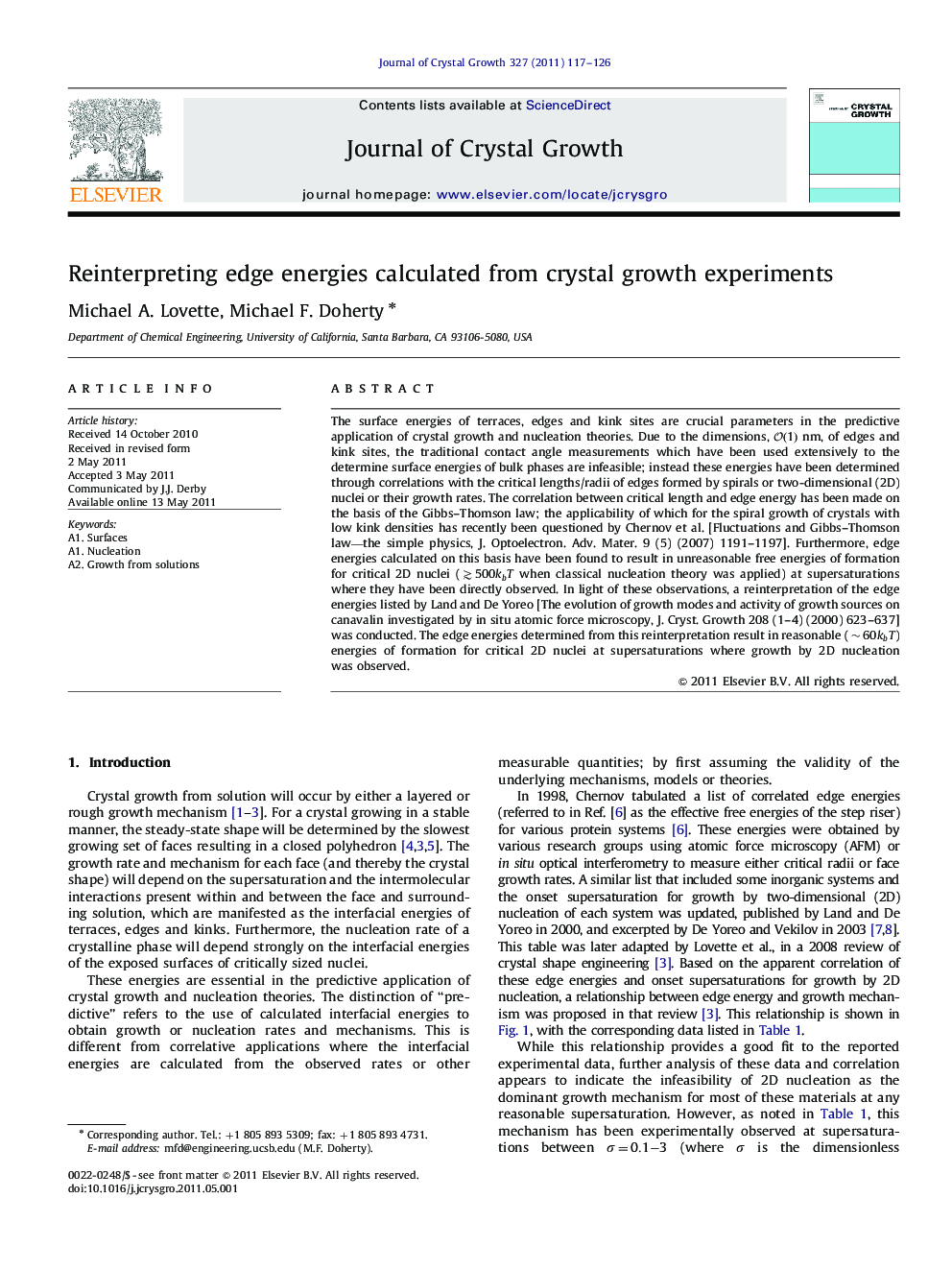| Article ID | Journal | Published Year | Pages | File Type |
|---|---|---|---|---|
| 1792162 | Journal of Crystal Growth | 2011 | 10 Pages |
The surface energies of terraces, edges and kink sites are crucial parameters in the predictive application of crystal growth and nucleation theories. Due to the dimensions, O(1)O(1) nm, of edges and kink sites, the traditional contact angle measurements which have been used extensively to the determine surface energies of bulk phases are infeasible; instead these energies have been determined through correlations with the critical lengths/radii of edges formed by spirals or two-dimensional (2D) nuclei or their growth rates. The correlation between critical length and edge energy has been made on the basis of the Gibbs–Thomson law; the applicability of which for the spiral growth of crystals with low kink densities has recently been questioned by Chernov et al. [Fluctuations and Gibbs–Thomson law—the simple physics, J. Optoelectron. Adv. Mater. 9 (5) (2007) 1191–1197]. Furthermore, edge energies calculated on this basis have been found to result in unreasonable free energies of formation for critical 2D nuclei (≳500kbT≳500kbT when classical nucleation theory was applied) at supersaturations where they have been directly observed. In light of these observations, a reinterpretation of the edge energies listed by Land and De Yoreo [The evolution of growth modes and activity of growth sources on canavalin investigated by in situ atomic force microscopy, J. Cryst. Growth 208 (1–4) (2000) 623–637] was conducted. The edge energies determined from this reinterpretation result in reasonable (∼60kbT∼60kbT) energies of formation for critical 2D nuclei at supersaturations where growth by 2D nucleation was observed.
► Edge energies were re-evaluated using new correlations to measurable features. ► Two-dimensional nucleation dominates growth for ΔGc2D≲70kT on most crystals. ► The validity of thermodynamic and kinetic models for critical lengths is discussed.
